Physical Address
304 North Cardinal St.
Dorchester Center, MA 02124
![]() For video accompanying this chapter see ExpertConsult.com. See inside cover for access details.
For video accompanying this chapter see ExpertConsult.com. See inside cover for access details.
Glaucoma in children is a rare, potentially blinding condition. Characterized by elevated intraocular pressure-related damage to the eye, it is caused by a diverse group of conditions. Clinical presentation can vary; unlike glaucoma in the adult and depending on the age of onset, elevated intraocular pressure (IOP) can affect the whole eye and not just the optic nerve. The management of pediatric glaucoma is challenging and is very often surgical in nature. The aim is to provide a lifetime of vision by successfully controlling the child’s intraocular pressure for the duration of their life expectancy. Glaucoma filtration surgery is associated with a higher complication rate and a higher failure rate, due to the vigorous healing response in children as compared to adults. However, if the correct procedure is chosen and performed with meticulous care, complications can be minimized and success rates optimized. As most children will need several surgeries over the course of their life, consideration needs to be taken of the impact on their families and carers, as well as their schooling. The correction of ametropia and amblyopia therapy is also vital to maximize visual function.
A child suspected of having glaucoma can present in many ways. They may present with:
The clinical manifestations of elevated IOP, as occurs in infancy.
A condition that predisposes them to glaucoma, e.g. aphakia.
During screening when there is a family history of childhood glaucoma.
After having failed routine school vision testing.
Glaucoma from any cause in a neonate or infant is synonymous with the classic triad of lacrimation, blepharospasm, and photophobia due to corneal edema from elevated IOP. These signs are very suggestive of glaucoma and may appear before the hazy cornea and characteristic buphthalmos become obvious. Buphthalmos (ox eye), refers to the generalized ocular enlargement caused by elevated IOP from any cause in infancy ( Fig. 36.1 ). It is a unique finding of glaucoma in infancy because the young eye expands with increased IOP due to corneal and scleral collagen immaturity. The potential for corneal enlargement usually ceases by the age of 3 years, although the sclera remains deformable until around 10 years of age. As the IOP rises, Descemet’s membrane can rupture and retract as a scroll to form a ridge known as a Haab stria ( Fig. 36.2 ). The underlying endothelium tears, resulting in localized or diffuse corneal edema from aqueous influx into the stroma, causing a sudden cloudiness ( Fig. 36.3 ). With successful lowering of IOP, corneal clouding typically begins clearing first in the periphery ( Figs. 36.4 and 36.5 ). As the IOP returns to normal, photophobia may still persist due to the Haab striae. Over the age of 3 years, children are more likely to present with progressive myopia, strabismus, or after having failed vision testing.
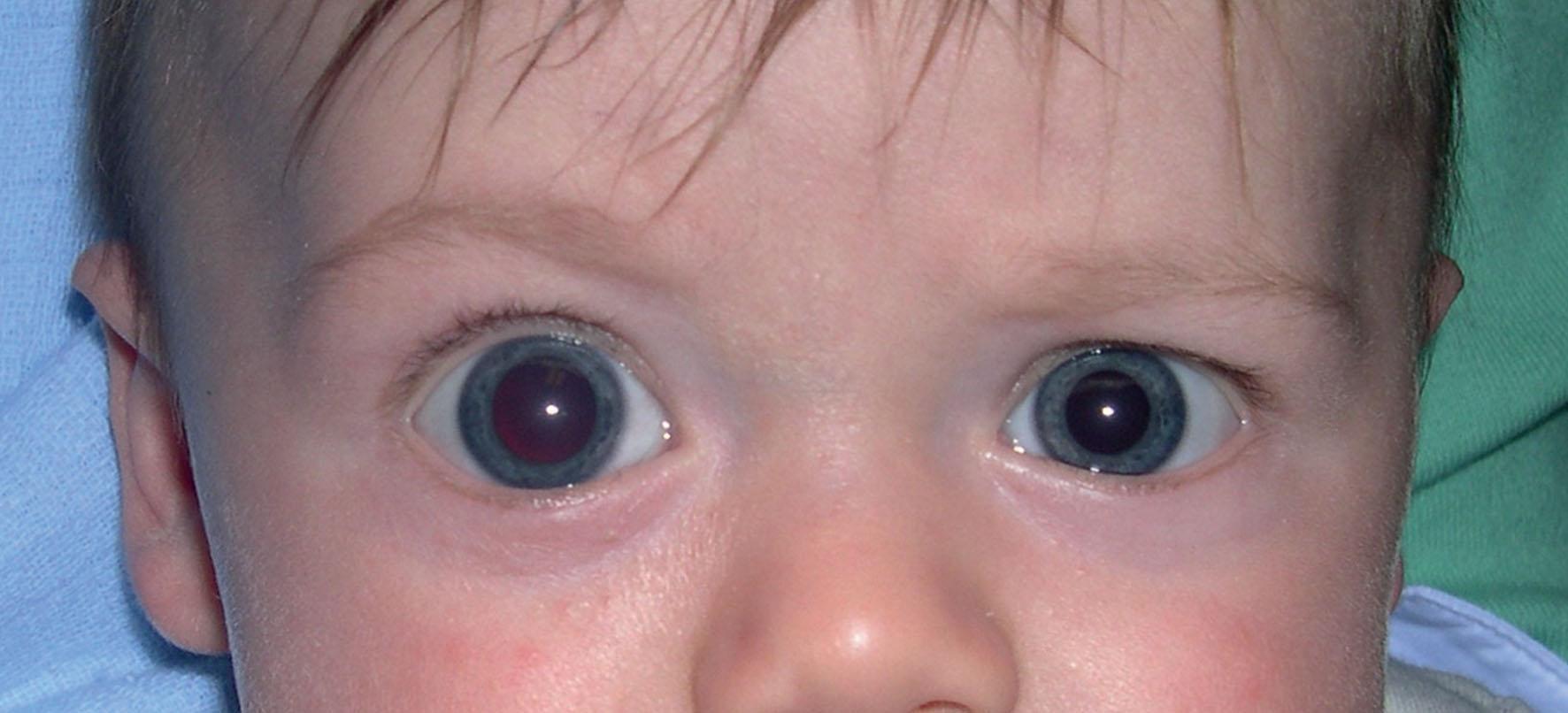
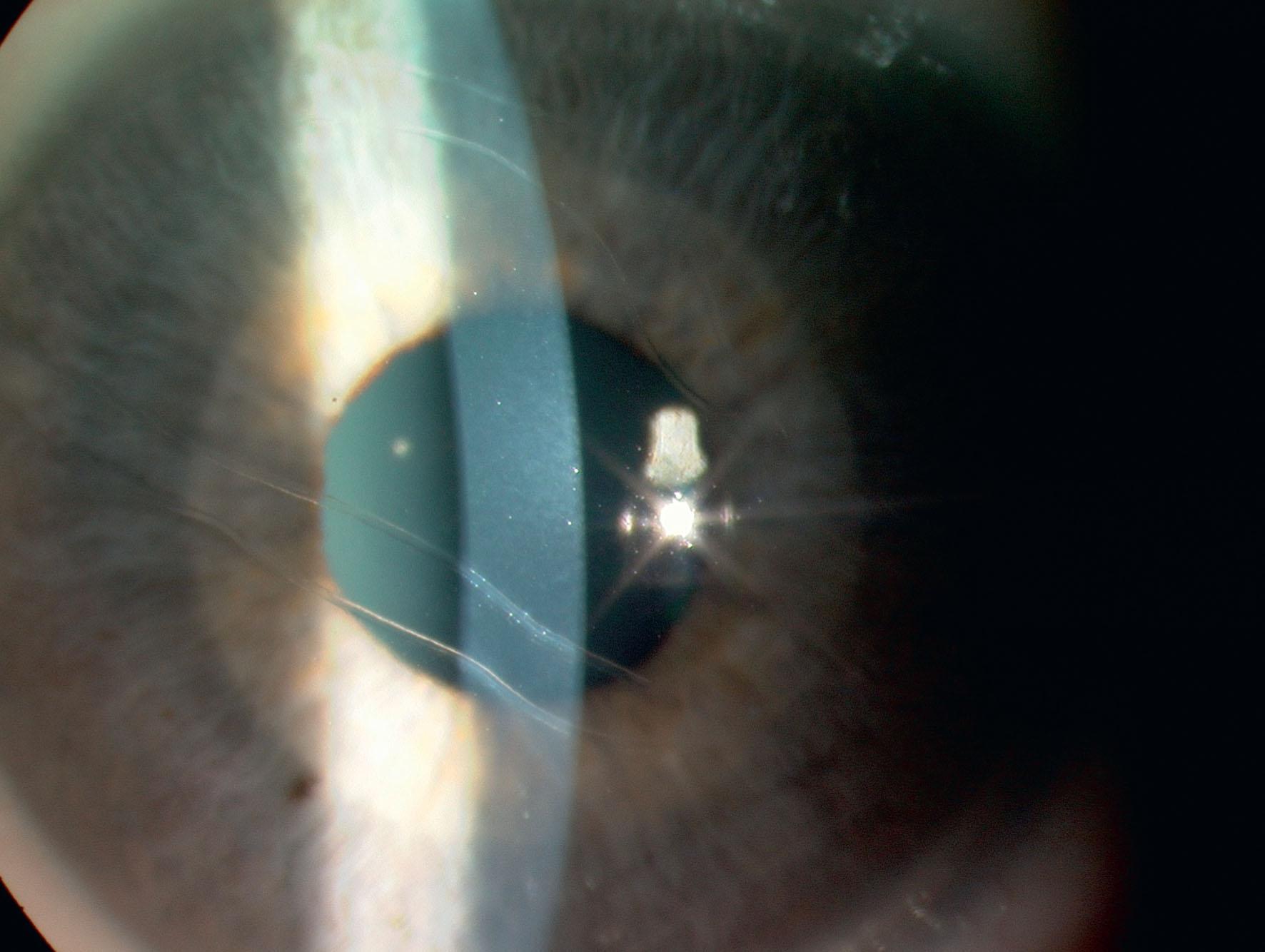
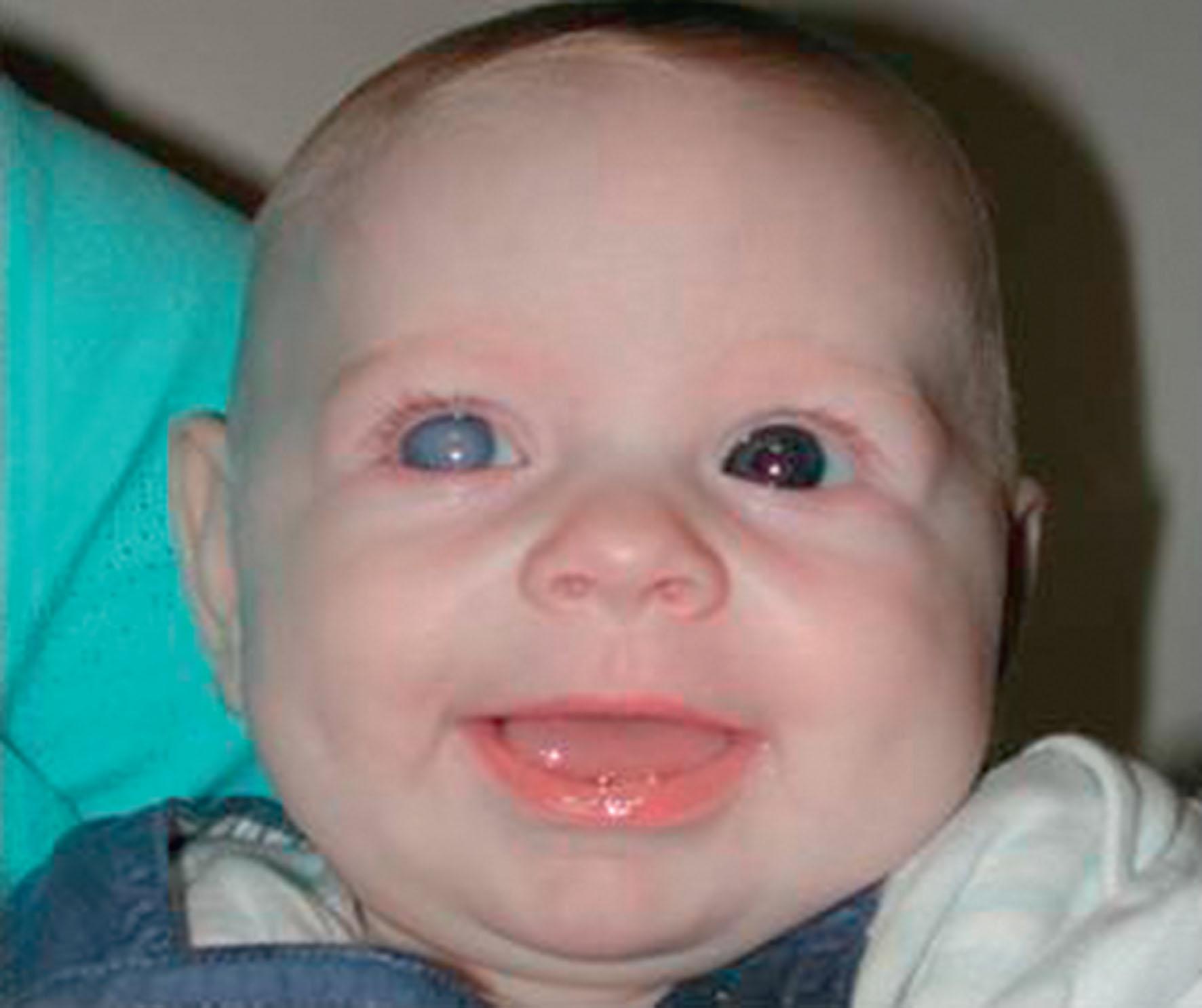
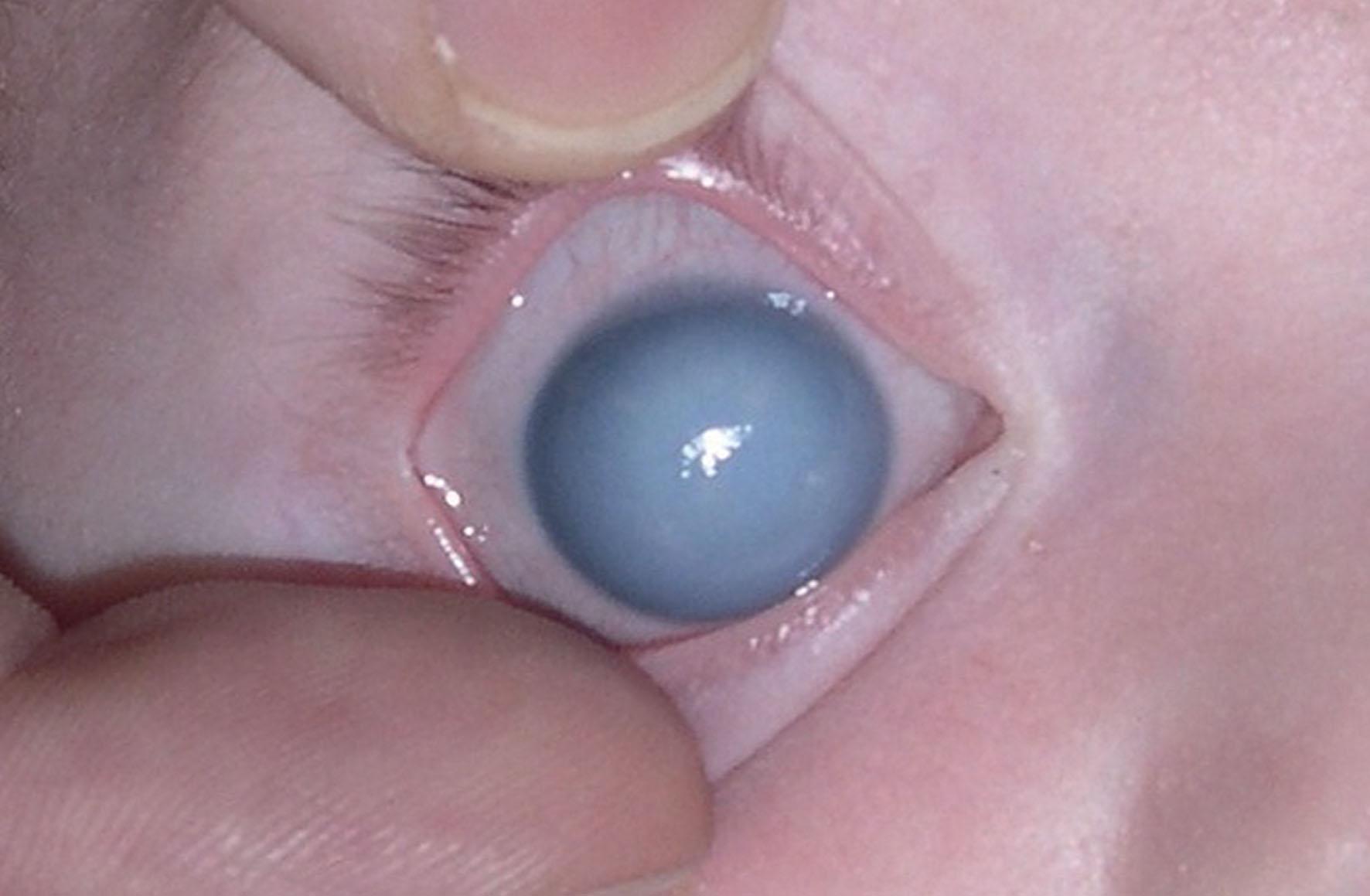
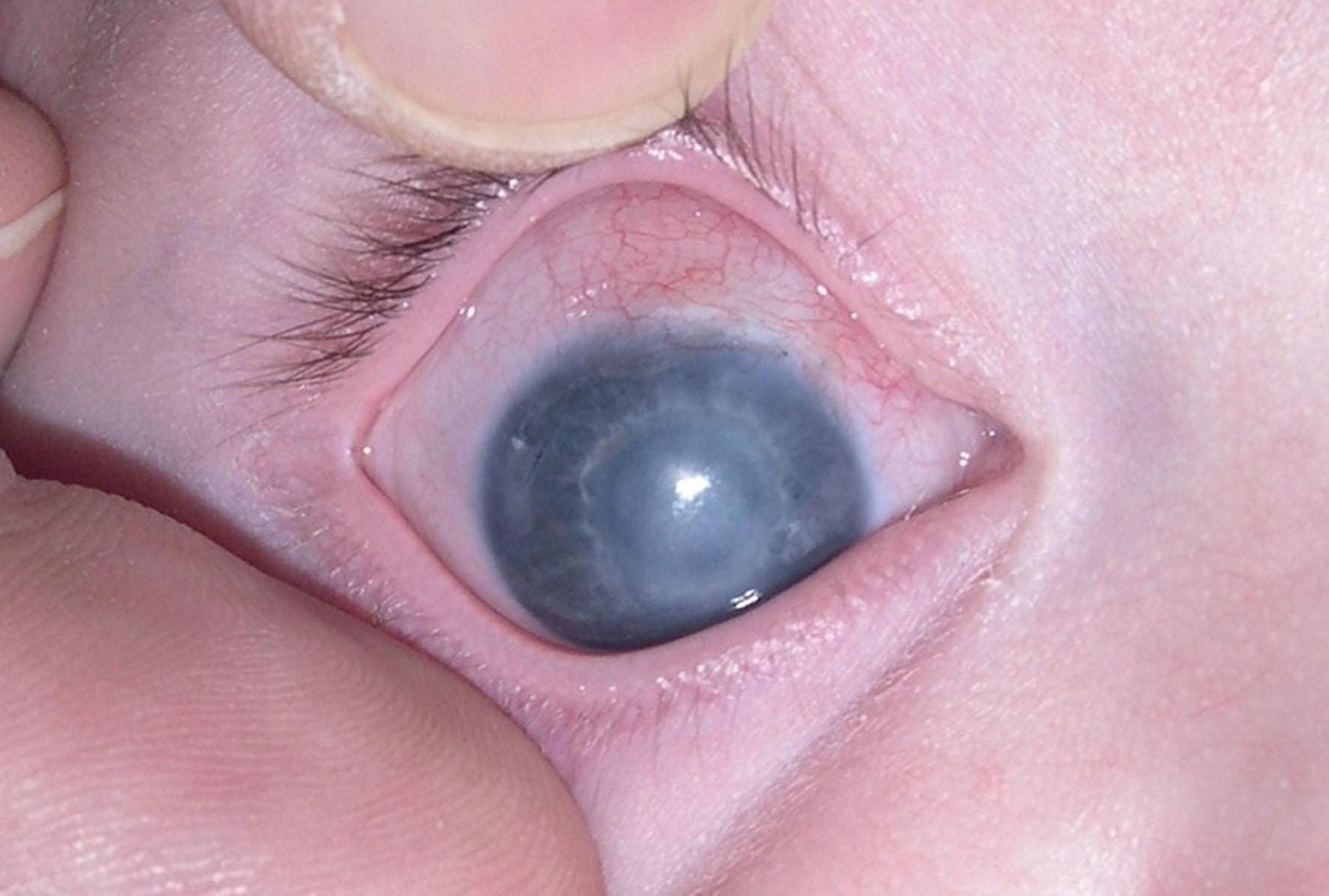
The differential diagnosis of glaucoma in children is broad ( Box 36.1 ). Many conditions mimic glaucoma, which must be excluded before making this diagnosis. In patients with other diagnoses, the IOP is normal and the signs will usually not be progressive.
No Descemet’s membrane splits or corneal edema, symmetrical
X-linked megalocornea (non-progressive, optic disc normal, very deep anterior chamber with shortened vitreous length, follow-up necessary for refractive amblyopia and exclusion of glaucoma)
Congenital high myopia (physiological cupping with tilted disc, peripapillary scleral crescent)
Connective tissue disorders, e.g. osteogenesis imperfecta, Marfan syndrome
LTBP2 mutations (primary congenital megalocornea, spherophakia, ectopia lentis, and secondary lens-related pupil block glaucoma)
No corneal enlargement, normal optic nerve
Trauma (obstetric, non-accidental, history)
Hydrops (history)
Usually no corneal enlargement unless associated with glaucoma which is rare
Trauma (obstetric, non-accidental)
Congenital corneal dystrophies, e.g. congenital hereditary endothelial dystrophy
Metabolic disorders, e.g. mucopolysaccharidoses, mucolipidoses, cystinosis
Infection, e.g. congenital rubella, herpes simplex keratitis
Sclerocornea
No Descemet membrane splits, corneal or ocular enlargement, normal optic nerve and intraocular pressure (IOP)
Conjunctivitis (often discharge, red eye)
Nasolacrimal duct obstruction (purulent discharge, no photophobia, no “runny nose”)
Corneal epithelial defect/keratitis (history and examination very important)
Ocular inflammation
No corneal enlargement or edema, normal IOP
Physiological cupping in large optic nerves
Congenital optic nerve pits, colobomata
Papillorenal syndrome
Optic nerve hypoplasia with periventricular leukomalacia
Childhood glaucoma can simply be classified as: primary, where there is an isolated developmental abnormality of the anterior chamber (AC) angle; and secondary, where aqueous outflow is reduced by non-acquired (congenital) or acquired ocular diseases or systemic disorders ( Box 36.2 ).
Primary congenital glaucoma (isolated trabeculodysgenesis)
Neonatal or newborn onset (0–1 month)
Infantile onset (>1 month to 2 years)
Late onset or late recognized (>2 years)
Spontaneously arrested (non-progressive buphthalmos, Haab striae, normal intraocular pressure [IOP] and optic nerves)
Juvenile open angle glaucoma
Conditions with predominantly ocular anomalies present at birth that may or may not be associated with systemic signs:
Axenfeld–Rieger anomaly (“syndrome” if systemic associations)
Peters anomaly (“syndrome” if systemic associations)
Congenital ectropion uveae
Congenital iris hypoplasia
Aniridia
Persistent fetal vasculature (PFV) (if glaucoma present before cataract surgery)
Oculodermal melanocytosis (nevus of Ota)
Microphthalmos/microcornea
Ectopia lentis
Simple ectopia lentis (no systemic associations)
Ectopia lentis et pupillae
Conditions predominantly with known syndromes, systemic anomalies, or systemic disease present at birth that may be associated with ocular signs:
Phacomatoses
Sturge–Weber syndrome
Neurofibromatosis (NF-1)
Klippel–Trenaunay–Weber syndrome
Chromosomal disorders such as trisomy 21 (Down syndrome)
Connective tissue disorders
Marfan syndrome
Weill–Marchesani syndrome
Stickler syndrome
Metabolic disorders
Homocystinuria
Lowe syndrome
Mucopolysaccharidoses
Rubinstein–Taybi
Congenital rubella
Conditions that are not inherited or present at birth but that develop after birth :
Uveitis
Trauma (hyphema, angle recession, ectopia lentis)
Steroid induced
Tumors (benign/malignant, ocular/orbital)
Retinopathy of prematurity (ROP)
Post-surgery other than cataract surgery
Subdivided into three categories based upon cataract type and there being no glaucoma prior to cataract surgery :
Congenital idiopathic cataract
Congenital cataract associated with ocular anomalies/systemic disease or syndrome
Acquired cataract
Primary congenital glaucoma (PCG) is typically bilateral (70%–80%) but often asymmetric, and usually manifests in the first year of life. Diagnosis is based on the finding of an isolated angle anomaly, i.e. isolated trabeculodysgenesis. It is sub-classified based on the age of onset of signs: neonatal glaucoma (onset at less than 1 month old), infantile (onset after 1 month old and less than a year), and late onset (after 2 years of age). The age of onset influences the response to angle surgery.
PCG is the most common glaucoma in infancy and has a reported incidence of approximately 1 in 10,000–20,000 live births in Western countries. The highest reported incidence is 1 : 1250 in Slovakian Romani people. Parental consanguinity is thought to be responsible for the higher prevalence in certain ethnic groups. PCG occurs more frequently in males than females, with a ratio of between 2–2.5: 1.
PCG is usually sporadic, although many cases are inherited as autosomal recessive. A family history of glaucoma is more common in those with consanguinity, reported to be 10%-40%, with variable penetrance. Varied expressivity and phenotypes result in poor correlation between genotyping and phenotyping and there is no established relationship between genotype and surgical outcomes.
The most common mutation to be identified is the CYP1B1 gene, which participates in the development and function of the trabecular meshwork (TM). Oxidative stress early in development has been postulated to cause trabecular dysgenesis and result in PCG. The glaucoma-associated genetic loci (GLC) that are affected are GLC3A (Chr2p21) (90% of all familial cases), GLC3B (Chr1p36.2-p36.1), and GLC3C (Chr14q24.3). GLC3D is caused by a mutation in LTBP2 (Chr14q24) and GLC3E is caused by mutation in the angiopoietin receptor encoding gene TEK (Chr9q21). MYOC has also been shown to be associated with PCG in different populations worldwide.
For those with a family history of consanguinity, it is essential to examine both siblings and parents of the patient, ideally in the first 6 months of life; however, for families of European descent with low incidence of parental consanguity, the risk of an affected sibling is much lower, at less than 5%. Genetic screening is possible for at-risk relatives and for pre-natal diagnosis. If a mutation is found in each parent, the risk for the next child to be affected would be 25%, as it is a recessive condition. Parents with one child affected without genetic screening have a 10% chance of having another affected child (as up to 40% of PCG is autosomal recessive). If the first child is screened and there is no mutation in CYP1B1 , then there is only 2% chance of the next being positive.
The immature angle appearance is thought to result from developmental arrest of tissues derived from cranial neural crest cells in the third trimester. The severity of the abnormality varies according to the stage at which development arrested. Obstruction to outflow was historically thought to be due to the presence of an impermeable membrane (Barkan membrane) but this has never been verified histopathologically. It is now thought that thick, compacted trabecular sheets obstruct outflow and also prevent the normal posterior migration of the uveal tract (iris and ciliary body).
Become a Clinical Tree membership for Full access and enjoy Unlimited articles
If you are a member. Log in here